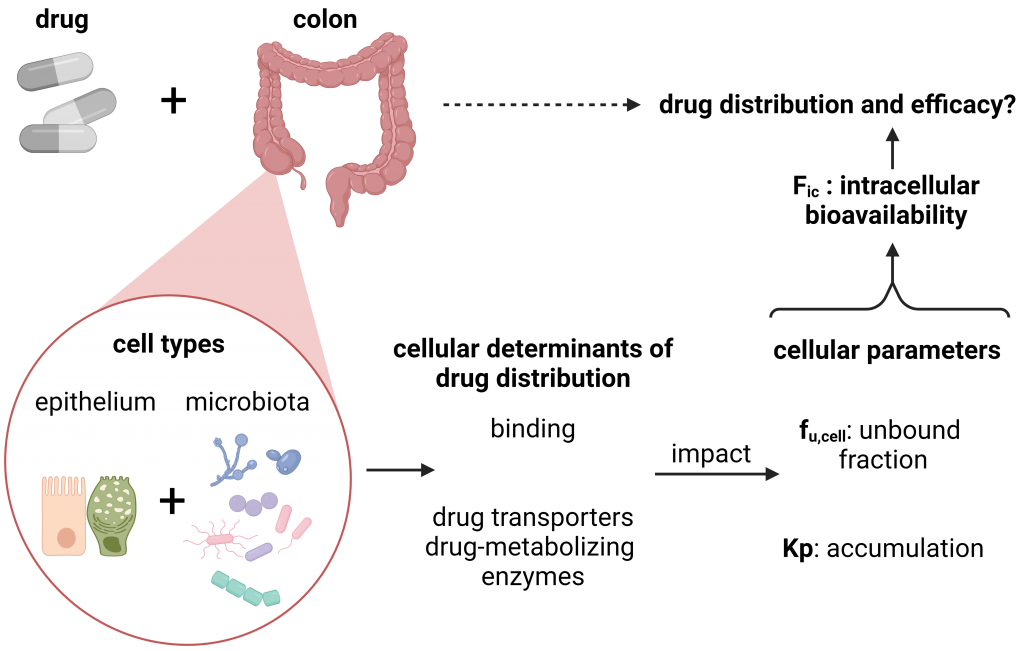Epithelial and microbial determinants of colonic drug distribution
Rebekkah Hammar, Mikael E. Sellin, Per Artursson
Abstract
A dynamic epithelium and a rich microbiota, separated by multi-layered mucus, make up the complex colonic cellular environment. Both cellular systems are characterized by high inter- and intraindividual differences, but their impact on drug distribution and efficacy remains incompletely understood. This research gap is pressing, as, e.g., inflammatory disorders of the colon are on the rise globally. In an effort to help close this gap, we provide considerations on determining colonic epithelial and microbial cellular parameters, and their impact on drug bioavailability. First, we cover the major cell types found in vivo within the epithelium and microbiota, and discuss how they can be modeled in vitro. We then draw attention to their structural similarities and differences with regard to determinants of drug distribution. Once a drug is solubilized in the luminal fluids, there are two main classes of such determinants: 1) binding processes, and 2) transporters and drug-metabolizing enzymes. Binding lowers the unbound intracellular fraction (fu,cell), which will, in turn, limit the amount of drug available for transport to desired sites. Transporters and drug metabolizing enzymes are ADME proteins impacting intracellular accumulation (Kp). Across cell types, we point out which processes are likely particularly impactful. Together, fu,cell and Kp can be used to describe intracellular bioavailability (Fic), which is a measure of local drug distribution, with consequences for efficacy. Determining these cellular parameters will be beneficial in understanding colonic drug distribution and will advance the field of drug delivery.
Full article – DOI: 10.1016/j.ejps.2023.106389



